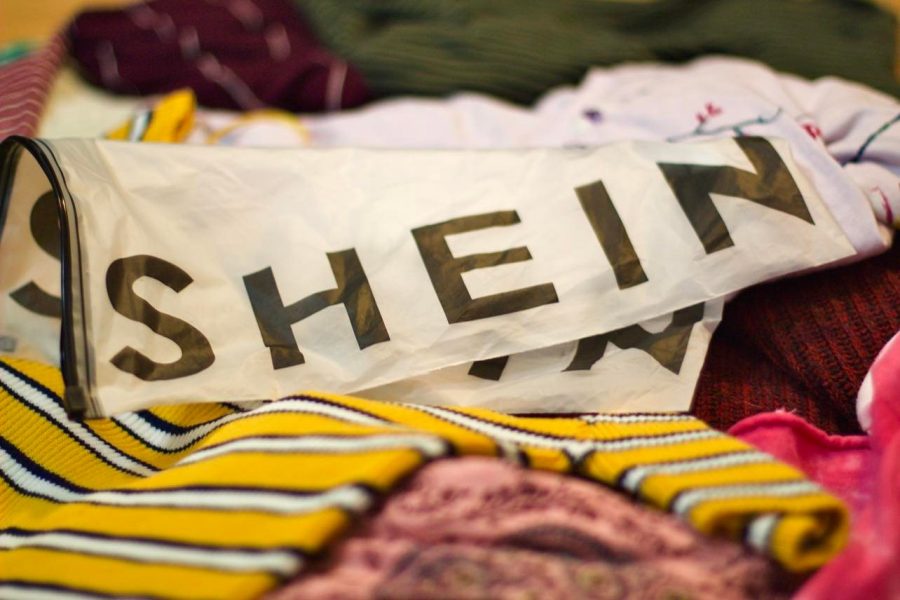Shein is one of the most popular fast fashion brands, but its environmentally harmful production methods have many people wondering just how bad it is for the planet.
Read on to understand Shein’s massive environmental impact and why we should think twice before buying from them.
Is Shein Bad for the Environment?
Yes, Shein is extremely harmful to the environment due to its unsustainable production methods, reliance on cheap synthetic fabrics like polyester, and lack of transparency about its supply chain emissions and pollution.
Key Points
- Shein emits over 6.3 million tons of CO2 per year, more than many countries.
- The company uses large amounts of virgin polyester, generating immense plastic waste.
- Toxic chemicals like phthalates and formaldehyde are found in Shein clothing.
How Does Shein’s Production Impact the Environment?
Shein produces clothing at an astonishing rate, releasing thousands of new items every day.
This “fast fashion” model relies on cheap fabrics like polyester instead of more sustainable options.
Producing polyester and other synthetics emits huge amounts of CO2 and microplastics that pollute waterways.
Shein makes primarily virgin polyester too, meaning brand new plastic is made instead of recycling existing materials.
The brand also uses toxic chemicals like phthalates and formaldehyde to produce clothes as fast and cheaply as possible.
These hazardous substances get released into the environment.
Shein applies minimal oversight to its massive supply chain spanning many countries, leading to pollution and unethical working conditions.
Just How Much Does Shein Pollute?
The data paints a grim picture of Shein’s planetary impact.
The brand emits over 6.3 million tons of CO2 per year – more than entire countries!
A single order from Shein produces over 6 kg of CO2 on average.
As a major user of virgin polyester, the company produces immense plastic waste that persists in ecosystems and landfills for centuries.
Shein clothing contains high levels of phthalates and formaldehyde as well.
When washed, these toxic substances enter wastewater systems and pollute waterways.
Microplastics from synthetic fabrics join them, causing severe environmental harm.
How Does Shein Compare to Other Brands?
Among the major fast fashion players, Shein is especially unsustainable according to environmental groups.
A Greenpeace study gave Shein the lowest score for its use of plastics and an undisclosed supply chain.
The brand emits more CO2 than H&M and Zara combined.
Part of this massive impact comes from Shein’s unprecedented output.
The company adds 500-2000 new items daily, exponentially more than comparable brands.
Shein also lacks specific environmental policies and transparency about its sustainability practices.
Is Any of Shein’s Production Sustainable?
Shein claims to be making an effort, but the results are underwhelming so far.
A few of the brand’s items incorporate recycled polyester, which has a lower environmental impact than virgin polyester.
However, recycled fabrics make up a tiny fraction of Shein’s success.
The company also joined the UN Fashion Industry Charter for Climate Action.
However, Shein has not followed through on the charter’s goals for reducing emissions, plastic use, and transparency.
Overall, Shein’s sustainability measures seem more like token PR moves than substantive change.
What About Shein’s Prices – Are They Too Good to Be True?
Shein’s rock-bottom prices do come at a hidden cost – massive environmental damage.
The brand keeps prices low by relying on exploited labor, stealing designs, and skimping on product quality and safety.
However, the environment bears the largest hidden cost.
Shein only churns out clothing faster and cheaper by dumping waste, emitting CO2 and microplastics, and using hazardous chemicals.
The brand externalizes these real costs instead of paying to protect the planet.
The consumer sees none of these expenses on their receipt.
Who Bears the Brunt of Shein’s Environmental Damage?
Major brands like Shein spread their pollution and waste across the globe, but certain communities feel the impacts most acutely.
Fast fashion hubs including China, Bangladesh, and India experience heavy first-hand contamination and pollution.
Workers in these regions suffer from exposure to toxic dyes, water pollution, and smog from textile factories.
When Shein dumps waste and emissions into waterways and the air, neighboring communities pay the price.
Developing economies struggle to implement environmental protections from large apparel manufacturers too.
Can Customers Pressure Shein to Improve Its Sustainability?
Exposing Shein’s track record hopefully pushes the brand to substantively improve its practices.
However, customers possess immense power as well.
Consumers can vote with their dollars – every order placed shows Shein its harmful business model is still profitable.
Individuals can make a difference by avoiding Shein and similar fast fashion purveyors.
Seeking out sustainable brands sends the message that customers value ethical production.
Spreading awareness of Shein’s environmental impact provides accountability too.
Should We Outright Reject Fast Fashion to Protect the Planet?
The fast fashion industry as a whole causes immense ecological damage.
Shein is just one major player in a fundamentally unsustainable system.
Producing clothing at extreme speed and cost inevitably harms the environment at every stage.
Eco-friendly shopping habits can help reduce damage, but the fast fashion model will continue exploiting people and the planet for profits.
Rejecting fast fashion altogether sends the firmest message that consumers demand change.
However, significant systemic change ultimately requires policy and unified action across the industry.
What Are the Health Risks of Shein’s Toxic Chemical Use?
The hazardous chemicals used by Shein and other fast fashion brands pose risks even after being purchased.
These substances don’t just disappear once the clothes leave the factory – they linger to endanger your health.
Phthalates and formaldehyde found in Shein clothing can cause issues like hormone disruption and cancer.
Lead and other heavy metals used in dyes are toxic as well.
Washing releases these dangerous particles into water systems and the air.
Workers experience even greater exposure during production, risking their health to crank out clothing at breakneck speeds.
Customers contribute to these health hazards by purchasing from brands that use toxic methods.
How Can Customers Make More Sustainable Clothing Choices?
The most direct way to reduce environmental harm is by buying less clothing overall.
Consider whether you truly need a new item before purchasing.
Seek quality over quantity in your wardrobe.
When you do shop, look for sustainable materials like organic cotton, recycled polyester, hemp, linen, and wool.
Also, research brands thoroughly to ensure fair worker treatment and ethical production methods.
Lastly, keep clothing in use longer by caring for items properly and repairing them if needed.
Donate or resell unwanted pieces.
Take responsibility for the full life cycle of the clothes you buy.
Will Shein Change Its Problematic Production Practices?
Shein shows no signs of genuinely transforming its business model to align with ecological limits.
The brand continues prioritizing exponential growth and profits over environmental sustainability.
Shein engages in token sustainability efforts just to satisfy minimal PR and regulatory needs.
Effectively regulating Shein’s pollution requires coordinated efforts by governments and international bodies.
As consumers, we must demand real change through both our voices and our purchasing choices.
The stakes for the planet are incredibly high.
Conclusion
In summary, Shein’s environmentally harmful production makes the brand one of the most unsustainable clothing retailers today.
Shein’s breakneck pace of manufacturing cheap synthetic fabrics generates immense pollution and toxic waste.
The company lacks transparency and masks the true costs of its exponentially growing business.
Collective awareness, accountability, and action are urgently needed to influence Shein and protect the planet from fast fashion’s destruction.
Our purchasing choices matter, so we must support ethical brands and materials instead.
FAQ
What Fabrics Are Most Sustainable?
Organic cotton, hemp, linen, and wool have much lower environmental impacts than synthetic polyester. Look for recycled polyester as a better plastic option.
How Can I Dispose of Clothing Sustainably?
Donate, reuse, or resell quality secondhand pieces. Recycle natural fabrics like cotton and wool. Ensure harmful synthetic items don’t end up in landfills.
What Certifications Indicate Sustainable Fashion?
Credits like Bluesign, Cradle to Cradle, and OEKO-TEX indicate clothing made with safer materials and ethical practices. B Corps are sustainable businesses.
Can Washing Clothes Release Toxins?
Yes, hazardous chemicals applied during production get released when clothes are washed. These toxins then enter wastewater systems.
At GreenChiCafe, we are passionate about protecting the environment and our natural world. Please check out our website for more content on living sustainably.

Annie is a passionate environmental writer and activist. She has been writing about sustainability, conservation, and green living for over 15+ years. Annie is dedicated to raising awareness about environmental issues and providing practical tips for living an eco-friendly lifestyle. When she’s not writing, you can find her volunteering with local environmental organizations, teaching workshops on zero waste living, or exploring nature. Feel free to get in touch with Annie: annie@greenchicafe.com


